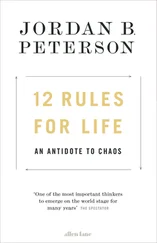After you read the print in this way, look away from the page for a minute and see if you remember what you read. It is amazing how many people have absolutely no recollection of the text, or a very limited recollection.
I enjoy sharing this story about someone in a recent class who lost vision in one eye almost completely and could not really see text. I had him read an eye chart, and he could read only eight letters. When I quickly moved his face away from the chart, he did not remember even one out of those eight letters, for three times in a row. We finally made some progress when he remembered at least one. Consequently, he started to have some vision in an eye that both he and his doctors had dismissed as being completely blind. The first day of the class, he had to be led around by another person; that was when his stronger eye, or what he called his “seeing eye,” was patched. The second day, he still had to be led around but felt more confident and could not be stopped. After trying to recollect what was on the chart, he walked with an eye patch without any disturbance and looked with the eye that he had dismissed as blind. He didn’t see well yet, but he was not blind.
On a much smaller scale, what’s amazing is when you start to remember part of what you read; even if you don’t remember but just try to recollect it, you’ll find that the vision in both eyes becomes much stronger.
This work with the macula can change you physically and spiritually. Quite often, we have a single-minded idea about the reality of life, when the reality of life actually has many levels and many variations. Looking at many details helps you experience the variations that both the physical and the psychological worlds have to offer.
The Ink Is Black and the Page Is White
With a small piece of paper taped to the bridge of your nose to block the central vision in your strong eye, look at an eye chart in bright sunlight or under bright inside light. Look at the page and imagine that the black ink of the print is interrupting the white of the page. Slowly move your attention from letter to letter. Start with the large print in line one. Meanwhile, wave your hand to the side of the stronger eye. This way you’re simultaneously working to increase the periphery of the stronger eye and improving the central vision of the weaker eye.
You are engaging your weaker eye in practice that it’s not used to. Normally, the strong eye dominates. When there is stress on the visual system—and I would like to suggest that most of us, even those who have good vision, have some visual stress—the tendency of the system is to use the strong parts and suppress the weak ones. But this is unhealthy for us. It makes us work very hard to see. When you wave to the side of the strong eye and look with the weaker eye, you wake up cells in the eye and in the brain that normally are not working. When you wake them up, there’s a great relief because there is more balance in the system, and no one group of cells works harder than the others.
Now close your eyes and imagine that the space is white and the ink is black, and remember a single letter you just saw. It will give you a sense that you are really looking at that letter. Say out loud, “The ink is black and the page is white.” You don’t need to wave your hand while your eyes are closed, but you can imagine that you are waving your hand to the side of the strong eye while reading with the weaker eye. Then open your eyes and wave to the side of the strong eye and read the next line with the weaker eye. Now close your eyes and say out loud, three times, “The ink is black and the page is white.” Then open your eyes and wave your hand to the side and read the next line. Next, look away into the distance, and wave your hand to the side of your head. Now look back at the fourth line without changing the distance at which you started; then close your eyes and visualize the letters again. Repeat the process for the last lines of text. Each time you close your eyes, say out loud, “The ink is black and the page is white.” Or say the opposite: “The page is white and the ink is black.”
When you finish doing all these movements, look back at the third line and see how clear it became. Then look back at line number one. What you did is that you trained your brain to look at smaller details with the eye that normally did not work as much as the other. In this way, you create equality in your brain, which takes away the stress from underusing the weaker eye and overusing the stronger eye.
You should see these results rather quickly. Most people are astounded at how much better they can see when they take the paper away from their eyes. For a time span that could last for two seconds to several minutes, they can see the page in much greater clarity because they used their weaker eye.
Repeating this exercise two or three times a day for the first two months, and once a day for the next three months, will forge a whole new pathway in your brain, and the brain will become accustomed to utilizing both eyes in unison.
Accompanied by other exercises that we will do, this will start to wake up the precious macula in both eyes. This is relevant because the macula reflects what is in the universe. One of my workshop participants, a physician by profession, spoke like a poet, and his poetry resonated deeply within me and within the other workshop participants. He said, “The macula is like the sun, and the periphery is like all the stars around the sun, and the farther you get from the sun, the less bright it is. The farther you get from the macula, the dimmer you see. But you would see with dim light.”
He was absolutely right. The farther you get from the macula, the less you see bright light and clear details, but the more you see dim light and unlit details. There is a place for both the macula and the periphery. We need to use both. The macula can be stimulated by strong sunlight with the sunning exercise. It is stimulated by your thoughts and by your actions. The more you look at details, smaller details nearby and smaller faraway details, the better you see.
Look far away right now. Look at a cloud. Look into the distance, just like you had learned to do before. As you look far into the distance, you see clouds and mountains, buildings and sky. While you see clouds moving, or mountains on the horizon, wave your hand to the side and look into the distance. Also, pay attention to smaller details than the ones you would normally see. Let’s say you see the windows of a faraway building. Now close your eyes and visualize the windows and their frames. Try to recall details within one single window. Then open your eyes and look from window to window. Do not strain to see. Take a look at the absolutely smallest details you can possibly see in one window, as long as you don’t strain.
Now close your eyes and visualize a contrast. If you saw a white curtain with a black frame, visualize the differentiation of those colors. If you saw wrinkled curtains, close your eyes and visualize the difference between the wrinkles and the protruding parts; then look up and down that window. From there, start to look at all the rest of the windows. Moving from one to the other will activate your macula. Additionally, you don’t lose the periphery and you pay attention to what you see with your weaker eye while waving your hand to the side of the stronger eye.
In most cases, a person’s weaker eye for proximity is also his or her weaker eye for distance. However, with a minority of cases—but still a high percentage—it can be that one eye is stronger for seeing near, and the other eye is stronger for distance. If this is the case with you, do this exercise first with your eye that sees well from nearby; then do it with your eye that sees well from far off. This work can make a very big difference to you in that both eyes will participate more equally in whatever you’re looking at. As you continue to look from afar, you will see that your eyes get sharper, just like from nearby. As you look at smaller details, the larger ones become clearer because your macula has gained function and can look at a great speed from detail to detail. In fact, the speed is so great that you cannot notice.
Читать дальше











